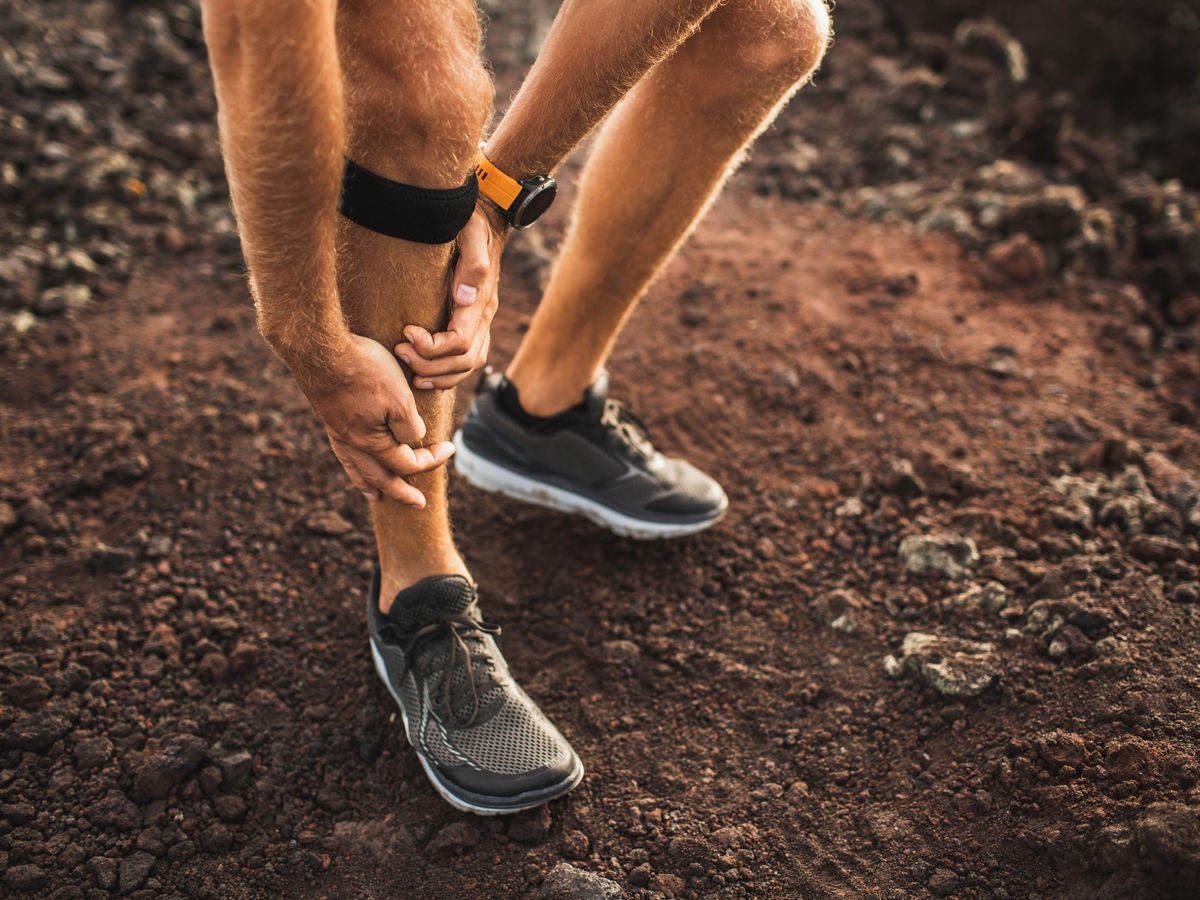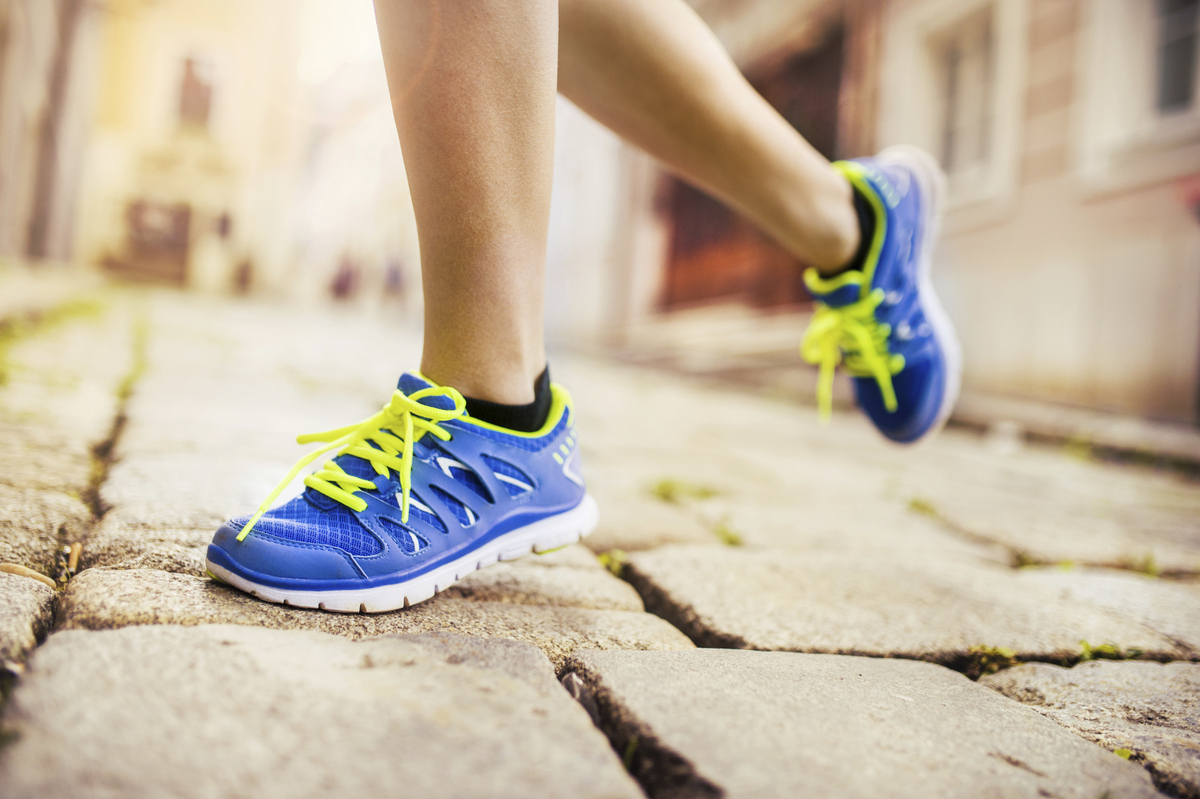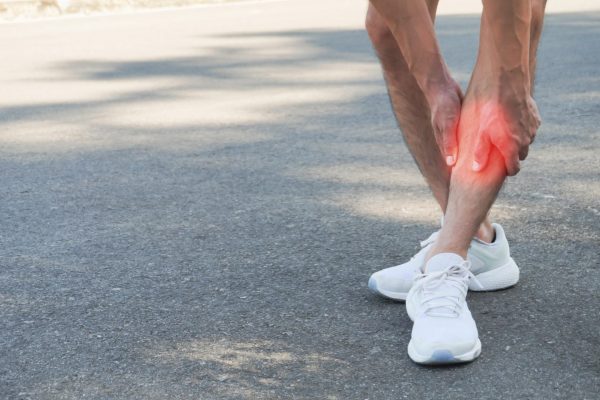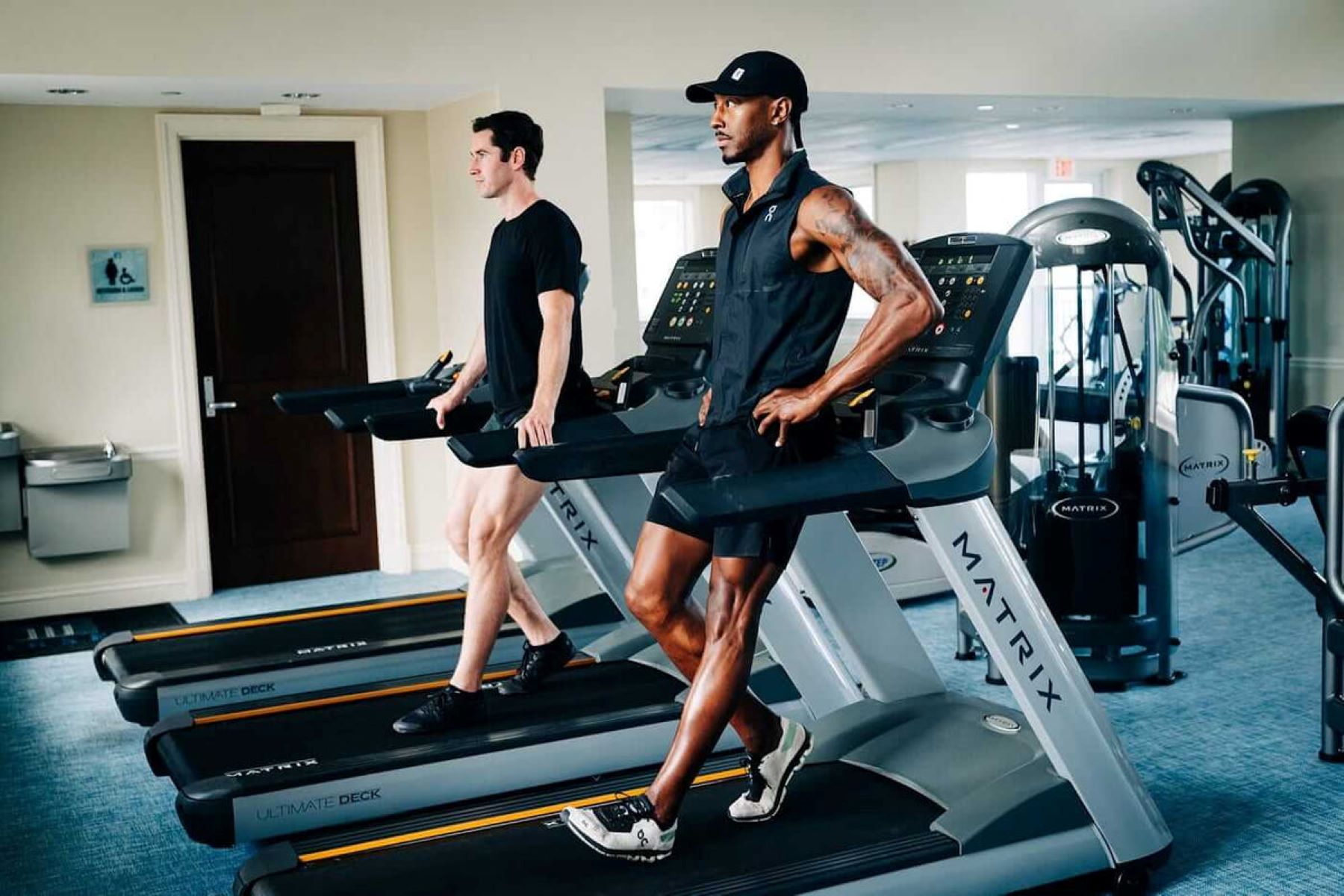

Featured
Why Does My Shin Hurt When Jogging
Modified: October 24, 2023
Discover the reasons why your shin hurts when jogging. Our featured article provides valuable insights and tips to relieve discomfort and improve your running experience.
Introduction
Running is a fantastic form of exercise that offers numerous health benefits, from improving cardiovascular fitness to boosting mood. However, for some individuals, this activity can become quite disheartening when they start experiencing pain in their shins while jogging. If you have ever experienced this discomfort, you are not alone.
Shin pain, also known as shin splints, is a common complaint among runners and athletes, especially those who engage in high-intensity activities or have recently increased their training intensity. It can range from a dull ache to sharp, intense pain along the front of the lower leg, making it difficult to continue running.
Understanding the underlying causes of shin pain is crucial in order to effectively address and prevent it. In this article, we will explore the various factors that contribute to shin pain while jogging, as well as the steps you can take to alleviate the discomfort and prevent it from recurring.
Whether you are a seasoned runner or just beginning your jogging journey, it is important to pay attention to your body’s signals and take proactive measures to protect your shins. By following the tips and strategies outlined in this guide, you can ensure a pain-free and enjoyable running experience.
Causes of Shin Pain
Shin pain can occur due to a variety of factors, and understanding the root causes is crucial in effectively addressing and preventing this discomfort. The following are common causes of shin pain:
- Shin Splints: This is a common condition that refers to pain and inflammation in the muscles and tendons surrounding the shinbone. Shin splints often occur due to overuse or repetitive stress on the lower leg, such as running on hard surfaces or sudden changes in training intensity.
- Stress Fractures: A stress fracture is a small crack in the bone, and it can develop in the shinbone as a result of repetitive stress or high impact activities. Stress fractures are often seen in athletes and runners who push their bodies beyond their limits without proper rest and recovery periods.
- Muscle Imbalances: Imbalances in the muscles of the lower leg can contribute to shin pain. When certain muscles are overactive or weak, it can lead to excessive stress and strain on the shinbone and surrounding tissues. Common muscle imbalances include weak calf muscles and overactive shins muscles.
- Incorrect Running Form: Running with poor technique can place excessive stress on the shins and lead to pain. Factors such as overstriding, landing with a heavy heel strike, or excessive inward or outward rolling of the foot can all contribute to shin pain.
- Shoes and Footwear: Wearing inappropriate footwear or shoes that do not provide adequate support and cushioning can contribute to shin pain. Shoes that are worn out, lack proper arch support, or do not fit properly can increase the risk of discomfort and injury.
By understanding these causes, you can take proactive steps to address the underlying issues contributing to your shin pain. In the following sections, we will delve deeper into each cause and explore effective strategies for treatment and prevention.
Shin Splints
One of the most common causes of shin pain while jogging is shin splints. Shin splints, medically known as medial tibial stress syndrome, refer to the inflammation of the muscles, tendons, and tissue surrounding the shinbone. This condition typically occurs due to overuse or repetitive stress on the lower leg.
Shin splints often present as a dull ache along the front of the lower leg. The pain can be mild to severe and may worsen during exercise, especially when running on hard surfaces. If left untreated, shin splints can become increasingly painful and interfere with your ability to enjoy your favorite physical activities.
Several factors contribute to the development of shin splints. One common cause is sudden increases in training intensity or duration. This can overload the muscles and tendons in the lower leg, leading to irritation and inflammation.
Another contributing factor is running on hard or uneven surfaces, such as concrete or a slanted road. These surfaces can increase the impact and stress on the lower leg, exacerbating the risk of developing shin splints.
To prevent and treat shin splints, it is crucial to take proactive measures. Gradually increase your training intensity and duration to allow your body to adapt to the demands of running. Incorporate rest days into your training schedule to give your muscles time to recover and repair.
Additionally, ensure that you are running on suitable surfaces. Whenever possible, choose softer surfaces like grass, dirt trails, or rubberized tracks to lessen the impact on your shins. If you must run on concrete or pavement, consider investing in a good pair of running shoes with ample cushioning and support.
When shin splints do occur, it is essential to rest and allow your body to heal. Applying ice to the affected area can help reduce inflammation and alleviate pain. Gentle stretching and exercises targeting the muscles of the lower leg can also help strengthen and improve flexibility, preventing future occurrences of shin splints.
By addressing the underlying causes and implementing appropriate preventive measures, you can effectively manage and prevent shin splints, allowing you to continue running and enjoying the benefits of this fantastic form of exercise.
Stress Fractures
While shin splints are a common cause of shin pain during jogging, stress fractures can also be a contributing factor. A stress fracture refers to a small crack or fracture in the bone, usually occurring due to repetitive stress or high-impact activities.
Stress fractures in the lower leg, particularly in the shinbone (tibia), can result from excessive repetitive force on the bone. This can happen when runners increase their training intensity too quickly or fail to allow for adequate rest and recovery periods.
Stress fractures often present as a localized pain along the shinbone, which may worsen with activity and subside during rest. The pain can be sharper and more intense than the dull ache associated with shin splints.
If you suspect a stress fracture, it’s crucial to seek medical attention for an accurate diagnosis and appropriate treatment. Continued running on a stress fracture can lead to further damage and more prolonged healing times.
In most cases, treatment for stress fractures involves adequate rest from high-impact activities, including running, to allow the bone to heal. This may require wearing a cast or using crutches to reduce weight-bearing on the affected leg.
During the recovery period, low-impact activities like swimming or cycling can be substituted to maintain cardiovascular fitness. Physical therapy exercises focusing on strengthening the muscles surrounding the leg can also be beneficial in preventing future stress fractures.
Prevention is key when it comes to stress fractures. Gradually increase your training intensity and mileage to allow your bones and muscles to properly adapt and strengthen. Ensure you have proper footwear that provides adequate support and cushioning to minimize impact on the lower leg.
Additionally, incorporating cross-training activities, such as strength training and flexibility exercises, can help improve overall bone health and reduce the risk of stress fractures.
Remember, if you suspect a stress fracture, do not ignore the pain. Seek prompt medical attention to prevent further injury and promote a faster recovery.
Muscle Imbalances
Muscle imbalances in the lower leg can play a significant role in the development of shin pain while jogging. When certain muscles are weak or overactive, it can lead to excessive stress and strain on the shinbone and surrounding tissues.
One common muscle imbalance related to shin pain is weak calf muscles combined with overactive shin muscles. The calf muscles, specifically the gastrocnemius and soleus, play a crucial role in absorbing shock and providing stability during running. When these muscles are weak, the burden of stress is shifted to the shin muscles (tibialis anterior), leading to increased tension and potential discomfort.
Another contributing factor to muscle imbalances is inadequate stretching and poor mobility. Tightness in the calf muscles and limited ankle mobility can place added strain on the shins during running, increasing the risk of pain and injury.
To address muscle imbalances and reduce shin pain, it is essential to focus on strengthening the calf muscles while ensuring proper stretching and mobility exercises. Calf raises, both with straight and bent knee variations, can be beneficial for strengthening the calf muscles.
Additionally, incorporating dorsiflexion exercises, such as seated ankle dorsiflexion stretches or ankle mobility exercises with resistance bands, can help improve ankle flexibility and reduce tension in the shin muscles.
It is also crucial to incorporate stretching exercises targeting the calf muscles. Simple stretches, such as the standing calf stretch or wall calf stretch, can help alleviate tightness and maintain flexibility in the lower leg.
Working with a physical therapist or qualified fitness professional can be helpful in identifying specific muscle imbalances and developing a tailored exercise program to address these imbalances.
By focusing on strengthening the calf muscles, improving ankle flexibility, and maintaining proper mobility, you can reduce muscle imbalances and alleviate shin pain while jogging.
Incorrect Running Form
Running with poor technique and incorrect form can contribute to shin pain while jogging. When your body mechanics are off, it can place excessive stress on the shins and lead to discomfort and potential injury.
There are several factors related to running form that can contribute to shin pain:
- Overstriding: Taking long strides and landing with your foot too far in front of your body can lead to increased impact on the shins. This can result in greater stress on the muscles and bones of the lower leg.
- Heel Striking: Landing with a heavy heel strike can transmit a jarring impact through the lower leg, increasing the risk of shin pain. Instead, strive for a midfoot or forefoot landing to distribute the forces more evenly.
- Foot Pronation: Excessive inward or outward rolling of the foot, known as overpronation or supination, respectively, can alter the alignment and distribution of forces through the lower leg. This can contribute to increased stress and potential shin pain.
- Lack of Arm Swing: Neglecting to utilize your arms properly during running can affect your balance and overall running mechanics. This can lead to compensatory movements and increased stress on the lower leg.
To address incorrect running form and reduce shin pain, it is essential to focus on proper running technique. Here are some tips to improve your form:
- Focus on a shorter stride length, aiming for a cadence of around 180 steps per minute. This can help reduce the impact on your shins.
- Land with a midfoot or forefoot strike rather than a heavy heel strike. This can help distribute the forces more evenly throughout your lower leg.
- Pay attention to your foot alignment and ensure that you have proper arch support if you tend to overpronate or supinate.
- Engage your arms in a natural swinging motion, allowing them to work in coordination with your legs to maintain balance and efficiency.
Video analysis or working with a running coach can be helpful in identifying areas for improvement in your running form. By making adjustments and focusing on proper technique, you can reduce the strain on your shins and minimize the risk of pain while jogging.
Shoes and Footwear
The type of shoes and footwear you use while jogging can have a significant impact on shin pain. Wearing inappropriate or worn-out shoes can contribute to discomfort and increase the risk of injury.
Here are some factors to consider when it comes to shoes and footwear:
- Proper Fit: Ill-fitting shoes can result in increased pressure and friction on the feet and lower leg, potentially leading to shin pain. Ensure that your shoes provide a snug and comfortable fit, with enough room for your toes to move freely.
- Cushioning: Running shoes should provide adequate cushioning to absorb the impact of each step and reduce stress on the shins. Look for shoes with sufficient midsole cushioning that is appropriate for your weight and running style.
- Arch Support: The arch of your foot plays a crucial role in distributing forces throughout the lower leg. Choose shoes with appropriate arch support that matches your foot type, whether you have high arches, low arches, or neutral arches.
- Stability: A supportive shoe can help prevent excessive pronation or supination, reducing the risk of shin pain. Look for shoes that offer stability features such as a firm midsole and supportive upper.
- Quality and Durability: Well-constructed shoes made from durable materials can provide the necessary support and protection for your feet and lower legs. Regularly check your shoes for signs of wear and consider replacing them when the cushioning or tread is worn down.
It is recommended to visit a specialty running store to get fitted for the right pair of shoes. The staff can analyze your gait and foot structure to recommend shoes that meet your specific needs.
In addition to proper footwear, consider using orthotic inserts or customized insoles if you have specific foot conditions or biomechanical issues. These can provide additional support and help alleviate any imbalances or abnormalities that contribute to shin pain.
Remember to replace your running shoes regularly, typically every 300-500 miles or when you start to notice signs of wear and tear. Worn-out shoes lose their cushioning and support, increasing the chance of shin pain and other injuries.
Investing in the right shoes and regularly maintaining them can significantly reduce the risk of shin pain and enhance your overall running experience.
Warm-up and Cool-down
Proper warm-up and cool-down routines are essential for preventing shin pain and reducing the risk of injury during jogging. These two components of your exercise routine help prepare your body for physical activity and aid in the recovery process afterward.
A warm-up is a series of exercises and movements performed before your main workout or run. The purpose of a warm-up is to increase blood flow, raise your body temperature, and activate the muscles you will be using during your run. By warming up, you prepare your body for the increased demands of exercise and reduce the risk of muscle imbalances and strains.
Some effective warm-up exercises for preventing shin pain include brisk walking, gentle jogging, dynamic stretching, and exercises that activate the muscles of the lower legs, such as ankle circles and calf raises. Aim to spend at least 5-10 minutes gradually increasing your heart rate and warming up the muscles before you start your run.
After your run, it is equally important to cool down properly to aid in the recovery process and reduce muscle soreness. Cooling down helps to gradually decrease your heart rate, flush out waste products from your muscles, and increase flexibility.
Cool-down activities can include slow jogging or walking, followed by static stretches that target the muscles used during your run. Focus on stretching the calf muscles, hamstrings, and quadriceps. Hold each stretch for 15-30 seconds and remember to breathe deeply and relax into the stretch.
In addition to warm-up and cool-down exercises, incorporating foam rolling or self-massage techniques can help release tension and tightness in the muscles of the lower leg. This can aid in the recovery process and prevent muscle imbalances and subsequent shin pain.
Make warm-up and cool-down routines a regular part of your jogging routine to promote overall muscle health, reduce the risk of shin pain, and enhance your recovery.
Treatment and Prevention
Addressing shin pain effectively involves a combination of treatment strategies and preventive measures. Here are some approaches to consider:
Rest and Recovery: If you are experiencing shin pain, it’s important to rest and allow your body time to heal. Avoid activities that aggravate the pain, and consider taking a break from jogging until the discomfort subsides. During this time, you can engage in low-impact activities that do not place excessive stress on the shins, such as swimming or cycling.
Stretching and Strengthening Exercises: Incorporate stretching exercises for the muscles of the lower leg, focusing on the calves, shins, and ankles. This helps improve flexibility, reduce tension, and prevent muscle imbalances. Strengthening exercises targeting the calf muscles, such as calf raises, can also provide support and stability to the lower leg.
Adjusting Running Surface: Vary your running surface to reduce the impact on your shins. Opt for softer surfaces like grass or trails instead of concrete or pavement. Running on a track or treadmill with cushioning can also help minimize the stress on your shins.
Proper Footwear Selection: Invest in well-fitting running shoes that provide adequate cushioning, support, and stability. Visit a specialty running store for expert advice and assistance in finding the right shoes for your unique needs. Consider using orthotic inserts or insoles if you have specific foot conditions or biomechanical issues.
Gradual Progression: Avoid sudden increases in training intensity or mileage, as this can overwhelm your body and increase the risk of shin pain. Gradually progress your running routine, allowing your body to adapt and strengthen over time.
Cross-Training: Incorporate other forms of exercise, such as swimming, cycling, or strength training, into your routine. Cross-training helps prevent overuse injuries, enhances overall fitness, and reduces the repetitive stress on your shins.
Monitoring Running Form: Pay attention to your running technique and make adjustments as needed. Focus on maintaining proper form, including avoiding overstriding, landing with a midfoot strike, and engaging your arms for balance and efficiency.
By implementing these treatment and prevention strategies, you can effectively manage shin pain and minimize the risk of future occurrences. Remember to listen to your body, take rest days when needed, and seek professional advice if the pain persists or worsens. Taking care of your shins and adopting a proactive approach will allow you to enjoy your runs and maintain a healthy and pain-free jogging routine.
Rest and Recovery
When it comes to managing shin pain and preventing further discomfort, rest and recovery play a crucial role. Giving your body adequate time to rest and heal is essential for the overall health and wellbeing of your shins.
If you are experiencing shin pain, it’s important to listen to your body and prioritize rest. Continuing to push through the pain can worsen the condition and prolong your recovery time. Take a break from activities that exacerbate the pain, especially high-impact exercises like jogging or running.
During the rest period, you can engage in low-impact activities that do not place as much stress on the shins. Swimming, cycling, or using an elliptical machine can help maintain cardiovascular fitness without further aggravating the shin pain.
In addition to rest, there are several other steps you can take to aid in the recovery process:
- Ice: Applying ice to the affected area can help reduce inflammation and alleviate pain. Ice the shins for 15-20 minutes at a time, several times a day, especially after physical activity.
- Elevation: Elevating the legs can help reduce swelling and improve blood circulation. Prop your legs up on a pillow or cushion while resting to promote healing.
- Compression: Using compression socks or sleeves can help reduce swelling and provide support to the shins. Be sure not to wrap them too tightly to avoid restricting blood flow.
- Massage and Foam Rolling: Gentle massage and foam rolling techniques can help relieve tension in the muscles of the lower leg, promoting relaxation and aiding in the recovery process. Be cautious not to apply too much pressure or cause further discomfort.
- Slowly Resume Activity: Once your shin pain has subsided, gradually reintroduce jogging or running into your routine. Start with short, easy runs, and gradually increase the distance and intensity over time. Pay attention to any signs of discomfort and adjust your training accordingly.
Remember, each individual’s recovery time may vary, so be patient with your body as you gradually return to your usual activities. If the shin pain persists or worsens despite rest and self-care measures, consult a medical professional for a proper diagnosis and further treatment recommendations.
Rest and recovery are vital components of any fitness regimen, and prioritizing them can ensure the long-term health and resilience of your shins.
Stretching and Strengthening Exercises
Stretching and strengthening exercises play a crucial role in managing and preventing shin pain. These exercises can help improve flexibility, reduce muscle imbalances, and provide support and stability to the lower leg. Incorporating a regular routine of stretching and strengthening can significantly decrease the risk of shin pain while enhancing overall lower leg health.
Stretching Exercises:
Stretching the muscles of the lower leg is essential for maintaining flexibility and reducing muscle tension. Here are some effective stretches for the shins, calves, and ankles:
- Shin Stretch: Sit on your heels with your toes pointing backward. Lean back slightly and feel the stretch in your shins. Hold for 15-30 seconds.
- Calf Stretch: Stand facing a wall, step one foot forward, and place your hands on the wall for support. Keep the back leg straight and the front knee bent as you lean forward. Feel the stretch in the calf of the back leg. Hold for 15-30 seconds and repeat on the other side.
- Downward Dog: Start in a high plank position, then push your hips up and back to form an upside-down “V” shape. Press your heels towards the ground and feel the stretch in your calves and hamstrings. Hold for 15-30 seconds.
- Ankle Circles: Sit on the ground or on a chair with your legs extended. Rotate your ankles clockwise and then counterclockwise, making full circles with your feet. Perform 10-15 circles in each direction.
Strengthening Exercises:
Building strength in the lower leg muscles can help provide support and stability, reducing the risk of shin pain. Here are some exercises to incorporate into your routine:
- Calf Raises: Stand with your feet hip-width apart with your toes pointing forward. Lift your heels as high as possible, then slowly lower them back down. Perform 2-3 sets of 12-15 repetitions.
- Toes Raises: Sit in a chair with your feet flat on the ground. Lift your toes off the floor while keeping your heels grounded. Hold for a few seconds, then lower your toes back down. Perform 2-3 sets of 12-15 repetitions.
- Resistance Band Foot Flexions: Sit on the ground with your legs extended. Wrap a resistance band around the ball of your foot, holding the ends with your hands. Flex your foot against the resistance of the band, then release back to the starting position. Perform 2-3 sets of 12-15 repetitions on each foot.
Incorporate these stretching and strengthening exercises into your routine at least two to three times a week. Start with a gentle warm-up before performing these exercises to prepare your muscles for optimal flexibility and strength-building.
Remember to breathe deeply and relax into each stretch. If you feel any pain or discomfort, adjust the intensity or consult with a professional for guidance.
By regularly incorporating these exercises into your routine, you can improve the flexibility and strength of your lower leg muscles, minimizing the risk of shin pain while promoting overall lower leg health.
Adjusting Running Surface
The surface you choose to run on can have a significant impact on your shins and overall running experience. Adjusting your running surface can help reduce the impact on your legs, minimize shin pain, and prevent potential injuries. Here are some considerations to keep in mind:
Softer Surfaces:
Opting for softer surfaces can help cushion the impact of each step and reduce the strain on your shins. Consider running on surfaces such as grass, dirt trails, or rubberized tracks. These surfaces provide more shock absorption, resulting in less stress on your lower legs. Soft surfaces can be particularly beneficial if you are prone to shin pain or are recovering from a shin-related injury.
Varying Terrain:
Running on a variety of terrains can engage different muscles and tendons, reducing the repetitive stress on specific areas of your shins. Incorporate different surfaces into your running routine, such as hills, trails, or sand. Varying the terrain challenges your leg muscles in unique ways and can improve overall strength and resilience. However, be cautious when running on uneven surfaces to avoid tripping or twisting an ankle.
Avoiding Hard Surfaces:
Minimize running on hard surfaces, such as concrete or pavement, as they transmit more impact to your shins. If you must run on hard surfaces, consider choosing routes that have more forgiving sections, such as grassy areas alongside the road. Alternatively, look for running tracks or paths with built-in cushioning to help absorb some of the shock.
Progressive Surface Transition:
If you plan to transition to a softer surface or change your running terrain, do so gradually. Abruptly switching from running exclusively on pavement to a softer surface can put excessive stress on different muscles and potentially lead to discomfort or injury. Gradually introduce the new surface or terrain, allowing your body time to adapt to the new demands.
Adapting to Environmental Conditions:
Consider environmental factors during your runs, such as temperature and humidity. Higher temperatures and humidity can potentially increase fatigue, making your muscles more susceptible to strain. Adjust your running surface or terrain accordingly to accommodate these conditions. For example, running on shaded trails or grassy areas can provide some relief from the heat and its impact on your shins.
Remember, everyone’s body is unique, and what works for one person may not work for another. Listen to your body and pay attention to any signs of discomfort or pain. If you experience persistent shin pain or symptoms that worsen with specific surfaces, consult a medical professional for further evaluation and guidance.
By adjusting your running surface intelligently and taking into account factors like surface hardness and terrain variety, you can minimize shin pain, reduce the risk of injury, and enjoy a more comfortable and enjoyable running experience.
Proper Footwear Selection
Choosing the right footwear is crucial for preventing shin pain and ensuring a comfortable and injury-free running experience. Wearing the appropriate shoes can provide support, cushioning, and stability to your feet and lower legs, reducing the risk of discomfort and injury. Here are some factors to consider when selecting running shoes:
Proper Fit:
One of the most important aspects of shoe selection is finding a pair that fits correctly. Ill-fitting shoes can lead to increased pressure and friction on your shins and toes, potentially causing discomfort and blisters. Ensure that your shoes provide a snug fit without being too tight or constricting. There should be enough space for your toes to move and wiggle freely, but not so much room that your feet slide around inside the shoes.
Midsole Cushioning:
The midsole of the shoe, located between the outsole and the upper, provides cushioning and shock absorption. Opt for shoes with adequate midsole cushioning to help minimize the impact on your shins. The level of cushioning needed may vary depending on factors such as your body weight, running style, and personal preference. Consult with a knowledgeable professional at a specialty running store to help you find the right amount of cushioning for your needs.
Arch Support:
The arch of your foot plays a significant role in distributing forces throughout your lower leg. Look for shoes that offer appropriate arch support for your foot type. There are three general arch types: high arches, low arches (flat feet), and neutral arches. Understanding your foot arch type can help you select shoes that provide the right level of support and stability for your feet and shins.
Stability Features:
Stability features in running shoes can help control excessive pronation (inward rolling of the foot) or supination (outward rolling of the foot). Excessive pronation or supination can alter the alignment of your lower leg, increasing the risk of shin pain. Look for shoes that offer stability features such as a supportive midsole and a firm heel counter to help maintain proper foot positioning during running.
Quality and Durability:
Investing in well-constructed shoes made from durable materials is important for long-term foot health and preventing shin pain. Check for signs of quality craftsmanship, such as reinforced stitching and durable outsoles. Regularly inspect your shoes for signs of wear and tear, and replace them when the cushioning or tread begins to deteriorate.
To ensure you find the best-fitting shoes, consider visiting a specialty running store where knowledgeable staff can assess your foot and running mechanics. They can provide valuable guidance and recommend suitable shoes based on your specific needs.
Remember, the right shoes may vary for each individual, so what works for someone else may not be the best option for you. Listen to your feet and trust your comfort level when selecting running shoes to help minimize shin pain and maximize your running experience.
Conclusion
Shin pain can be a frustrating and discomforting experience for joggers and runners. However, with a proper understanding of the causes and effective strategies for treatment and prevention, you can overcome shin pain and continue to enjoy your runs.
In this comprehensive guide, we have explored various factors that contribute to shin pain while jogging, including shin splints, stress fractures, muscle imbalances, incorrect running form, shoes and footwear, and the importance of warm-up and cool-down routines.
By addressing these factors through rest and recovery, stretching and strengthening exercises, adjusting running surface, and selecting proper footwear, you can proactively manage and prevent shin pain.
Remember to listen to your body, pay attention to any signs of discomfort, and make adjustments as needed. It’s crucial to gradually progress your training, incorporate cross-training activities, and prioritize rest and recovery to keep your shins healthy and pain-free.
If you experience persistent or worsening shin pain, it is always advisable to consult with a healthcare professional or seek guidance from a qualified running expert. They can provide an accurate diagnosis and offer personalized recommendations to address your specific needs and concerns.
By incorporating the strategies outlined in this guide, you can reduce the risk of shin pain, improve your overall running experience, and continue reaping the countless benefits that running has to offer for your physical and mental well-being.
Remember, taking care of your shins is essential in maintaining an active and healthy running routine. So lace up those shoes, hit the road or trail, and enjoy a pain-free and exhilarating jog!








